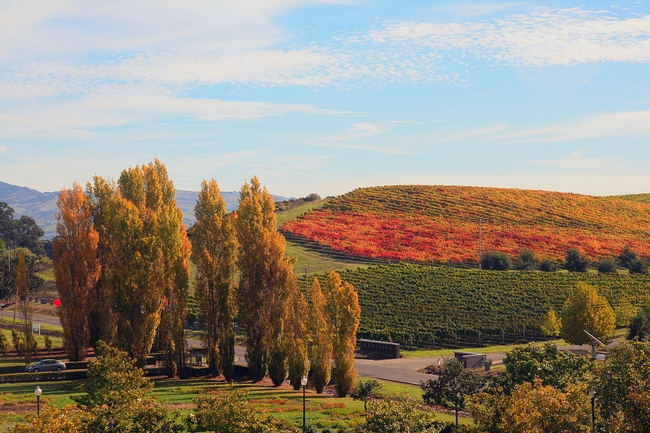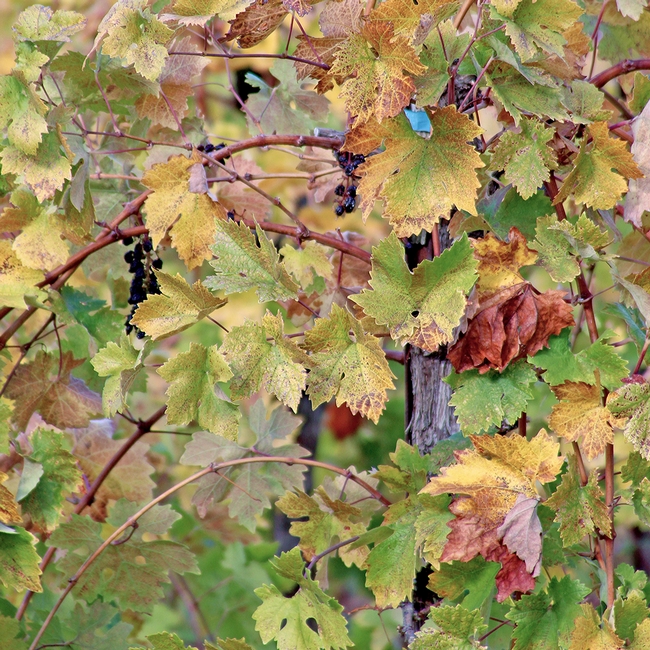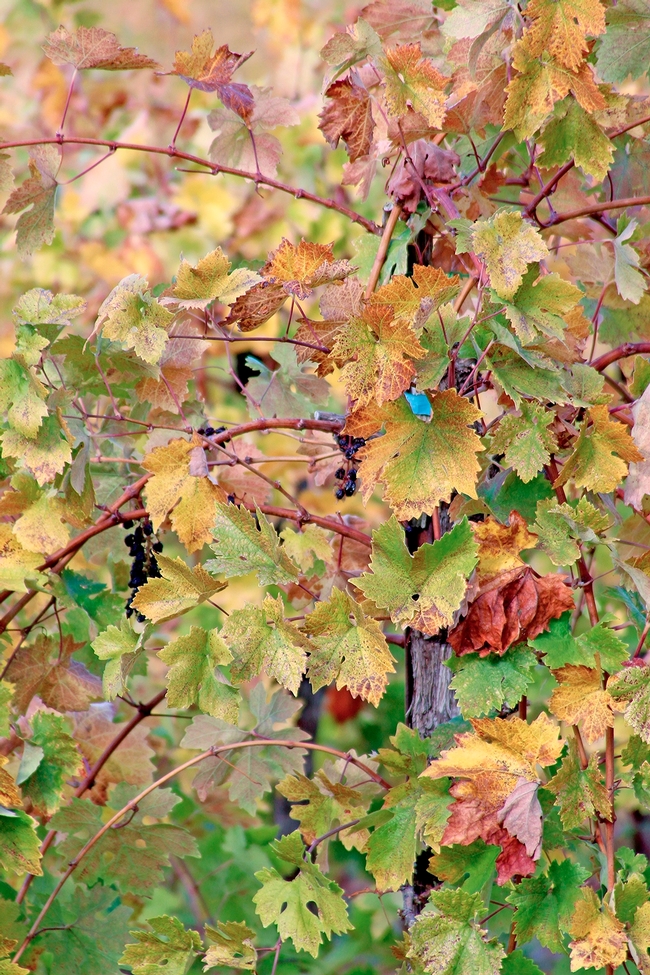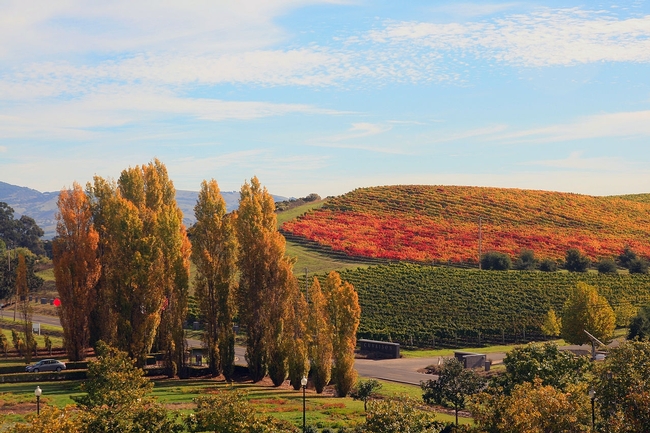Posts Tagged: red blotch disease
Grape experts give workshops on drought preparedness, red blotch
Grape growers and other industry members interested in grape production and water management in vineyards are invited to UC Cooperative Extension's Grapevine Drought Preparedness Workshops.
The workshops will be held in person on Friday, March 4, in San Luis Obispo and Friday, April 1, in Hopland.
Registration is $50 and includes a full day of live instruction from UC Cooperative Extension viticulture and grapevine experts. Lunch will be provided.
For more information and to register, visit https://ucanr.edu/sites/ShortCourse17.
UC Davis Grapevine Red Blotch Disease Symposium
On Wednesday, March 16, UC Cooperative Extension and the UC Davis Department of Viticulture and Enology will host a Grapevine Red Blotch Disease Symposium 9 a.m.-3:30 p.m.
Red blotch disease in grapevines, which can dramatically reduce the value of winegrapes, harms plants by inhibiting photosynthesis in the leaves. Infected vines are unable to conduct water effectively, leaving sugar that is created by photosynthesis stuck in the leaves instead of in the berries.
This event will be presented both in person at the UC Davis Conference Center and livestreamed for those unable to attend in person.
Presentations will cover the role of treehoppers, treatments, mitigation strategies, the impact of the disease on the composition of wine, and more.
Registration is $250 for the in-person symposium at UC Davis and $150 for the livestream. An application for 3.5 CCE units has been submitted to California Department of Pesticide Regulation and is pending approval.
To see the agenda and to register, visit https://wineserver.ucdavis.edu/events/uc-davis-grapevine-red-blotch-disease-symposium.
UC researchers discover how grapevine red blotch virus diminishes winegrape value
Grapevine red blotch virus, a disease that is dramatically reducing the value of winegrapes in California's premium wine production region, is harming plants by inhibiting photosynthesis in the leaves, according to research published this month in the Journal of Agricultural and Food Chemistry.
The new research also showed that infected vines weren't able to conduct water effectively, leaving whatever sugar that was created by photosynthesis stuck in the leaves. The accumulation of sugar in the leaves results in reduced sugar in the berries and lower-quality wine, said UC Cooperative Extension specialist Kaan Kurtural, one of the study authors.
According to the report, sucrose and its monosaccharides were the vast majority of soluble sugars found in the leaves. The leaf sugar tended to decrease in the ripening process on red blotch negative vines. But this was not the case in red blotch positive vines. As a result, grapevines infected with the virus produce winegrape clusters with reduced sugar content, poor color development and increased acidity.
Kurtural said the research will inform winegrape growers as they consider possible treatments in vineyards with grapevine red blotch-infected vines.
“There are some treatments that are being offered to growers, but now that we better understand the disease, we know they won't help,” Kurtural said. “Growers don't have to replace the infected vineyards immediately. But if 40 percent of vines are infected, they may want to consider replanting. At least now we know what the disease does, so they won't pay for snake oils.”
Grapevine red blotch virus was first discovered in the Oakville Experiment Station, UC Davis' research vineyard in Napa Valley, in 2008. Since then, researchers found the virus in grapevines throughout California and in 11 other states.
For the new research, the scientists compared naturally infected winegrape vines at the Oakville Station on two rootstocks – 110 R and 420 A – with vines grown on those two rootstocks that were not infected. Grape clusters were collected to examine differences in berry weight, titratable acidity, pH and total soluble solids.
“All those characteristics are important for wine quality,” Kurtural said. “Acidity and pH effect palatability and storage potential. Berry weight and soluble solids impact the physical characteristics of the wine.”
The grapevine red blotch virus impact on anthocyanidins and tannins are a still greater concern for winegrape growers as they change the flavor profiles sought in premium wines.
“High-value winegrapes are sold between $7,000 to $23,000 a ton. If the winegrapes don't have the profiles that wine makers are looking for, they may only be valued between $1,500 to $2,000 per ton,” Kurtural said.
The research was conducted by UC Davis post-doctoral students Johann Martinez-Buscher, Cassandra Plank, Runze Yu and Luca Brillante in collaboration with Kurtural, UCCE viticulture specialist Anita Oberholster, UCCE advisors Monica Cooper and Rhonda Smith and UC Davis Foundation Plant Services academic administrator Maher Al-Rwahnih.
Fall colors in wine country are not a picture of health

In 2008, a disease characterized by red blotches along leaf margins and red veins under the leaf surfaces was seen in red grapes growing in Napa Valley. The symptoms resembled leafroll disease, however laboratory tests did not detect any leafroll and rugose wood viruses in the samples. Since then, red blotch disease has been observed in vineyards throughout North America.
The infected grapevines may produce clusters with reduced sugar content, causing delayed harvests. Poor color development and increased acidity are found in some clusters on diseased vines.
A virus associated with red blotch disease was identified in 2012. The incidence of the red blotch disease relative to other virus diseases is currently not known, according to the UC IPM Pest Management Guidelines. The guidelines, produced by UC Agriculture and Natural Resources' (UC ANR) Statewide Integrated Pest Management Project, offer comprehensive information free online for pest control in more than 50 California crops.
UC ANR Cooperative Extension specialist, Deborah Golino, director of Foundation Plant Services at UC Davis, wondered if the virus associated with red blotch disease was new to California. She turned to the UC Davis Herbarium, a repository of 300,000 pressed plant samples, including grapevines dating back to 1940.
Golino and her laboratory staff collected 56 samples and, to prevent contamination, tested them in a lab that only works with lettuce. Of the 56 samples, one, an early burgundy collected in Sonoma County, was positive.
“We have confirmed that red blotch disease is not new,” Golino said. “It's been around at least since 1940.”
The results were published this year by the American Phytopathological Society in the journal Plant Disease.
An initiative to manage endemic and invasive pests and diseases is part of UC Agriculture and Natural Resources Strategic Vision 2025.


